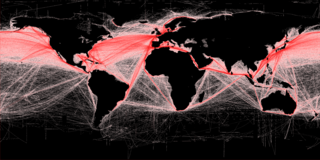 W
WFreight transport is the physical process of transporting commodities and merchandise goods and cargo. The term shipping originally referred to transport by sea but in American English, it has been extended to refer to transport by land or air as well. "Logistics", a term borrowed from the military environment, is also used in the same sense.
 W
WAustralian standard pallets are square softwood or hardwood pallets that are standard in Australia and non-standard anywhere else in the world.
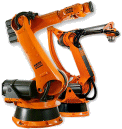 W
WAn automated guided vehicle or automatic guided vehicle (AGV), also called autonomous mobile robot (AMR), is a portable robot that follows along marked long lines or wires on the floor, or uses radio waves, vision cameras, magnets, or lasers for navigation. They are most often used in industrial applications to transport heavy materials around a large industrial building, such as a factory or warehouse. Application of the automatic guided vehicle broadened during the late 20th century.
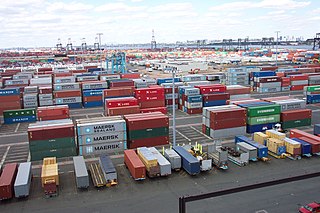 W
WCargo scanning or non-intrusive inspection (NII) refers to non-destructive methods of inspecting and identifying goods in transportation systems. It is often used for scanning of intermodal freight shipping containers. In the US it is spearheaded by the Department of Homeland Security and its Container Security Initiative (CSI) trying to achieve one hundred percent cargo scanning by 2012 as required by the US Congress and recommended by the 9/11 Commission. In the US the main purpose of scanning is to detect special nuclear materials (SNMs), with the added bonus of detecting other types of suspicious cargo. In other countries the emphasis is on manifest verification, tariff collection and the identification of contraband. In February 2009, approximately 80% of US incoming containers were scanned. To bring that number to 100% researchers are evaluating numerous technologies, described in the following sections.
 W
WA chain conveyor is a type of conveyor system for moving material through production lines.
 W
WContainer chassis, also called intermodal chassis or skeletal trailer, is a specialized semi-trailer, basically a wheeled metal frame, that a shipping container can be mounted onto for road transport. Chassis are used by truckers to deliver containers between ports, railyards, container depots, and shipper facilities. This type of trucking is sometimes called drayage.
 W
WA conveyor belt is the carrying medium of a belt conveyor system. A belt conveyor system is one of many types of conveyor systems. A belt conveyor system consists of two or more pulleys, with a closed loop of carrying medium—the conveyor belt—that rotates about them. One or both of the pulleys are powered, moving the belt and the material on the belt forward. The powered pulley is called the drive pulley while the unpowered pulley is called the idler pulley. There are two main industrial classes of belt conveyors; Those in general material handling such as those moving boxes along inside a factory and bulk material handling such as those used to transport large volumes of resources and agricultural materials, such as grain, salt, coal, ore, sand, overburden and more.
 W
WA conveyor system is a common piece of mechanical handling equipment that moves materials from one location to another. Conveyors are especially useful in applications involving the transport of heavy or bulky materials. Conveyor systems allow quick and efficient transport for a wide variety of materials, which make them very popular in the material handling and packaging industries. They also have popular consumer applications, as they are often found in supermarkets and airports, constituting the final leg of item/ bag delivery to customers. Many kinds of conveying systems are available and are used according to the various needs of different industries. There are chain conveyors as well. Chain conveyors consist of enclosed tracks, I-Beam, towline, power & free, and hand pushed trolleys.
 W
WA delivery drone is an unmanned aerial vehicle (UAV) used to transport packages, medical supplies, food, or other goods. Delivery drones are typically autonomous. In November 2020 the FAA proposed airworthiness criteria for type certification of delivery drones with an intent to initialize commercial operations. Zipline, Wingcopter, and Amazon Prime Air were amongst the 10 companies selected for this type certification.
 W
WDrayage is the transport of goods over a short distance in the shipping and logistics industries. Drayage is often part of a longer overall move, such as from a ship to a warehouse. Some research defines it specifically as "a truck pickup from or delivery to a seaport, border point, inland port, or intermodal terminal with both the trip origin and destination in the same urban area". Port drayage is the term used when describing short hauls from ports and other areas to nearby locations. It can also refer to the movement of goods within large buildings such as convention centers. Drayage is a key aspect of the transfer of shipments to and from other means of transportation. The term drayage is also used for the fee paid for such services.
 W
WDunnage bags, also known as airbags, and inflatable bags, are used to secure and stabilize cargo.
 W
WAn escort vehicle, also called a pilot vehicle in most areas, is an automobile used to escort trucks with large loads, convoys of large vehicles, guide motorists through construction sites, and assist aircraft in taxiing from the runway to the apron at many airports. In most instances, pilot vehicles are provided by companies that specialize in convoy escort, although escort duties are occasionally performed by police vehicles. Some escort companies have special authority for traffic control through state approval.
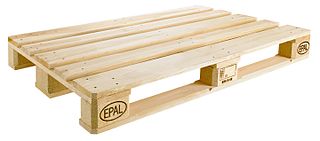 W
WThe EUR-pallet, also Euro-pallet or EPAL-pallet, is the standard European pallet as specified by the European Pallet Association (EPAL). Pallets conforming to the standardization are eligible for the European Pallet Pool (EPP), the system which allows for an exchange as "pallet for pallet".
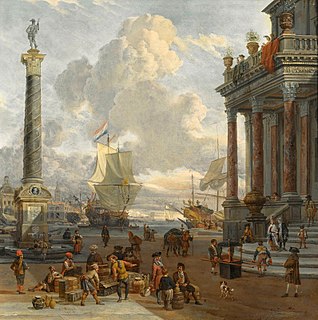 W
WAn export in international trade is a good produced in one country that is sold into another country or a service provided in one country for a national or resident of another country. The seller of such goods or the service provider is an exporter; the foreign buyer is an importer. Services that figure in international trade include financial, accounting and other professional services, tourism, education as well as intellectual property rights.
 W
WA freight forwarder, forwarder, or forwarding agent, is a person or company that organizes shipments for individuals or corporations to get goods from the manufacturer or producer to a market, customer or final point of distribution. Forwarders contract with a carrier or often multiple carriers to move the goods from one country to another.
 W
WFreightos operates an online international freight marketplace, using a SaaS-Enabled Marketplace model. It also provides multimodal freight sales and booking automation for freight forwarders and carriers through WebCargo, a subsidiary acquired in 2016
 W
WA full-line vending business sets up several types of vending machines that sell a wide range of products, such as soft drinks and snacks. Soft drinks are usually sold in 12 fl. oz. and 20 oz. in the United States and sometimes Australia, or 330ml and 500ml in Europe, Canada, and other areas. Snacks, bags of chips, and similar edibles are usually about 1-3 oz.
 W
WIn transport economics, the generalised cost is the sum of the monetary and non-monetary costs of a journey. It is sometimes used as a basis for judgements of transit accessibility and equitable distribution of public transit resources.
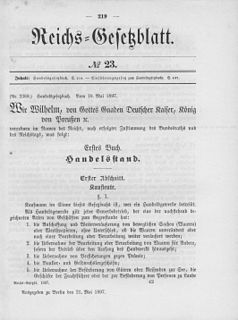 W
WThe Handelsgesetzbuch contains the core of the commercial law in Germany. It regulates the legal relations of merchants and therefore it is also designated as "the special private law for merchants".
 W
WThe transportation, handling and installation of heavy items which are indivisible, and of weights generally accepted to be over 100 tons and of widths/heights of more than 100 meters. These oversized items are transported from one place to another then lifted or installed into place. Characteristic for heavy lift goods is the absence of standardization which requires an individual transport planning.
 W
WAlthough logistics has been mostly utilized in commercial supply chains, it is also an important tool in disaster relief operations. Humanitarian logistics is a branch of logistics which specializes in organizing the delivery and warehousing of supplies during natural disasters or complex emergencies to the affected area and people. However, this definition focuses only on the physical flow of goods to final destinations, and in reality, humanitarian logistics is far more complicated and includes forecasting and optimizing resources, managing inventory, and exchanging information. Thus, a good broader definition of humanitarian logistics is the process of planning, implementing and controlling the efficient, cost-effective flow and storage of goods and materials, as well as related information, from the point of origin to the point of consumption for the purpose of alleviating the suffering of vulnerable people.
 W
WIntermodal freight transport involves the transportation of freight in an intermodal container or vehicle, using multiple modes of transportation, without any handling of the freight itself when changing modes. The method reduces cargo handling, and so improves security, reduces damage and loss, and allows freight to be transported faster. Reduced costs over road trucking is the key benefit for inter-continental use. This may be offset by reduced timings for road transport over shorter distances.
 W
WIntermodal railfreight in Great Britain is a way of transporting containers between ports, inland ports and terminals in England, Scotland and Wales, by using rail to do so. Initially started by British Rail in the 1960s, the use of containers that could be swapped between different modes of transport goes back to the days of the London, Midland & Scottish Railway.
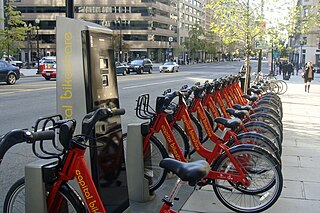 W
WLast mile is a term used in supply chain management and transportation planning to describe the last leg of a journey comprising the movement of people and goods from a transportation hub to a final destination. "Last mile" was adopted from the telecommunications industry which faced difficulty connecting individual homes to the main telecommunications network. Similarly, in supply chain management last-mile describes the difficult last part in the transportation of people and packages from hubs to final destinations. Last-mile delivery is an increasingly studied field as the number of business to consumer (b2c) deliveries grow especially from e-commerce companies in freight transportation, and ride-sharing companies in personal transportation. Some challenges of last-mile delivery include minimizing cost, ensuring transparency, increasing efficiency, and improving infrastructure.
 W
WLean manufacturing is a production method aimed primarily at reducing times within the production system as well as response times from suppliers and to customers.
 W
WA loading dock or loading bay is an area of a building where goods vehicles are loaded and unloaded. They are commonly found on commercial and industrial buildings, and warehouses in particular. Loading docks are part of a facility's service or utility infrastructure, typically providing direct access to staging areas, storage rooms, and freight elevators.
 W
WLogistics automation is the application of computer software or automated machinery to improve the efficiency of logistics operations. Typically this refers to operations within a warehouse or distribution center, with broader tasks undertaken by supply chain engineering systems and enterprise resource planning systems.
 W
WThe Logistics Performance Index (LPI) is an interactive benchmarking tool created by the World Bank to help countries identify the challenges and opportunities they face in their performance on trade logistics and what they can do to improve their performance. It is the weighted average of the country scores on six key dimensions: customs performance, infrastructure quality, ease of arranging shipments, logistics services quality, consignments tracking and tracing and timeliness of shipments. This measure indicates the relative ease and efficiency with which products can be moved into and inside a country. Germany and Sweden are the most efficient and highest ranked LPI countries as per the 2018 LPI.
 W
WA lowboy is a semi-trailer with two drops in deck height: one right after the gooseneck and one right before the wheels. This allows the deck to be extremely low compared with other trailers. It offers the ability to carry legal loads up to 12 ft (3.66 m) tall, which other trailers cannot. Lowboys are used to haul heavy equipment such as bulldozers and large industrial equipment.
 W
WMateriel or matériel refers to supplies, equipment, and weapons in military supply-chain management, and typically supplies and equipment in a commercial supply chain context.
 W
WA merchant navy or merchant marine or mercantile marine is the fleet of merchant vessels that are registered in a specific country. On merchant vessels, seafarers of various ranks and sometimes members of maritime trade unions are required by the International Convention on Standards of Training, Certification and Watchkeeping for Seafarers (STCW) to carry Merchant Mariner's Documents.
 W
WMid-stream operation is the operation of loading and unloading cargo containers at the container ship while at sea, with barges or dumb steel lighters performing the transfer, distribution or landing of containers to piers nearby.
 W
WOrder fulfillment is in the most general sense the complete process from point of sales inquiry to delivery of a product to the customer. Sometimes order fulfillment is used to describe the more narrow act of distribution or the logistics function, however, in the broader sense it refers to the way firms respond to customer orders.
 W
WOutsize cargo is a designation given to goods of unusually large size. This term is often applied to cargo which cannot fit on standardized transport devices such as skids (pallets) or containers. This includes military and other vehicles.
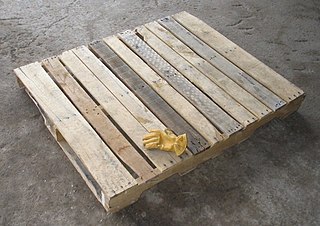 W
WA pallet is a flat transport structure, which supports goods in a stable fashion while being lifted by a forklift, a pallet jack, a front loader, a jacking device, or an erect crane. A pallet is the structural foundation of a unit load, which allows handling and storage efficiencies. Goods or shipping containers are often placed on a pallet secured with strapping, stretch wrap or shrink wrap and shipped. Since its invention in the twentieth century, its use has dramatically supplanted older forms of crating like the wooden box and the wooden barrel, as it works well with modern packaging like corrugated boxes and intermodal containers commonly used for bulk shipping.
 W
WA pallet collar is a modern and highly efficient wooden packaging solutions for compact, bulky or friable products of different types, that works together with the classic wooden pallet or various types of custom pallets. This solutions works as a substitution for the classic wooden boxes.
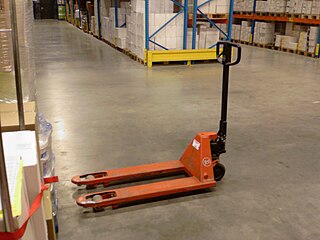 W
WA pallet jack, also known as a pallet truck, pallet pump, pump truck, scooter, dog, or jigger is a tool used to lift and move pallets. Pallet jacks are the most basic form of a forklift and are intended to move pallets within a warehouse.
 W
WPaper pallets, or ecopallets, are shipping or display pallets made from paperboard.
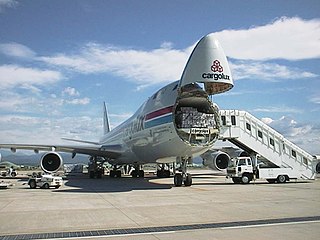 W
WA parcel is an individual consignment of cargo for shipment. Is the unit used in the daily practice for sending and receiving all kinds of cargo. It may have all shapes and sizes. The size can range from an actual mail parcel to 100 boxes of wine, with a top limit, for example, of 4 million barrels cargo of oil large enough to fill a supertanker.
 W
WIn philately a parcel stamp is a stamp specifically issued to pay the fee for the transport of a parcel through the postal system and usually marked as such. It is to be distinguished from a postage stamp used to pay the cost of posting a parcel, although there may no practical distinction as far as the sender is concerned. Parcel stamps issued by governments have the same status in philately as postage stamps, but parcel stamps issued by private railway companies or road carriers are regarded as cinderella stamps and many parcel stamps are also railway stamps.
 W
WPipeline transport is the long-distance transportation of a liquid or gas through a system of pipes—a pipeline—typically to a market area for consumption. The latest data from 2014 gives a total of slightly less than 2,175,000 miles (3,500,000 km) of pipeline in 120 countries of the world. The United States had 65%, Russia had 8%, and Canada had 3%, thus 75% of all pipeline were in these three countries.
 W
WIn general, a port of entry (POE) is a place where one may lawfully enter a country. It typically has border security staff and facilities to check passports and visas and to inspect luggage to assure that contraband is not imported. International airports are usually ports of entry, as are road and rail crossings on a land border. Seaports can be used as ports of entry only if a dedicated customs presence is posted there. The choice of whether to become a port of entry is up to the civil authority controlling the port.
 W
WA receipt is a document acknowledging that a person has received money or property in payment following a sale or other transfer of goods or provision of a service. All receipts must have the date of purchase on them. If the recipient of the payment is legally required to collect sales tax or VAT from the customer, the amount would be added to the receipt and the collection would be deemed to have been on behalf of the relevant tax authority. In many countries, a retailer is required to include the sales tax or VAT in the displayed price of goods sold, from which the tax amount would be calculated at point of sale and remitted to the tax authorities in due course. Similarly, amounts may be deducted from amounts payable, as in the case of taxes withheld from wages. On the other hand, tips or other gratuities given by a customer, for example in a restaurant, would not form part of the payment amount or appear on the receipt.
 W
WShipping Wars is a reality television series that aired on A&E from January 10, 2012 to April 29, 2015. The show follows various independent shippers who have discovered that money can be made transporting large/bulky/unusual items that traditional carriers either cannot or will not haul. They compete for shipments in timed auctions held by uShip, one of the largest online auction houses for independent shippers.
 W
WA Skid mount is a popular method of distributing and storing machinery and usually-stationary equipment for the military and industry. Simply put, the machinery at point of manufacture is permanently mounted in a frame or onto rails or a metal Pallet. The equipment can then be easily and securely transported and used as a unit. A unit such as a fire-fighting Skid unit may also be temporarily placed onto a vehicle to equip it for a task.
 W
WA Skid Unit is the common name used to refer to a complete self-contained fire fighting apparatus designed for use on/in commercially available vehicle platforms. Vehicles such as pickup trucks, flat bed trucks, vans, off-road vehicles, trailers and others can easily be fitted with a proper size skid unit for a variety of fire fighting operations. There is virtually no limit to size or performance capabilities. Fire operations can include rural field operations, forest fires, brush fires and other situations in which a small, highly mobile vehicle is necessary to reach the location of the fire ground operations in rough or otherwise inaccessible terrain.
 W
WSlip sheets are thin, pallet-sized sheets made of plastic, heavy laminated kraft paperboard, or corrugated fiberboard and are used in commercial shipping, replacing traditional wooden pallets. The unit load is usually stretch wrapped or shrink wrapped for stability.
 W
WThe spoke-hub distribution paradigm is a form of transport topology optimization in which traffic planners organize routes as a series of "spokes" that connect outlying points to a central "hub". Simple forms of this distribution/connection model compare with point-to-point transit systems, in which each point has a direct route to every other point, and which modeled the principal method of transporting passengers and freight until the 1970s. Delta Air Lines pioneered the spoke-hub distribution model in 1955, and the concept revolutionized the transportation logistics industry after Federal Express demonstrated its value in the early 1970s. In the late 1970s the telecommunications and information-technology sector subsequently adopted this distribution topology, dubbing it the star network network topology.
 W
WIn commerce, supply chain management (SCM), the management of the flow of goods and services, between businesses and locations, and includes the movement and storage of raw materials, of work-in-process inventory, and of finished goods as well as end to end order fulfillment from point of origin to point of consumption. Interconnected, interrelated or interlinked networks, channels and node businesses combine in the provision of products and services required by end customers in a supply chain.
 W
WA tail lift is a mechanical device permanently installed on the rear of a work truck, van, or lorry, and is designed to facilitate the materials handling of goods from ground level or a loading dock to the level of the vehicle bed, or vice versa.
 W
WThe Tasmanian Freight Equalisation Scheme is an Australian Government scheme to provide financial assistance to shippers of freight between Tasmania and mainland Australia. The scheme aims to assist in alleviating the sea freight cost disadvantage incurred by shippers of eligible non‐bulk goods moved between Tasmania and the mainland of Australia. It provides a freight subsidy to producers selling into Australian domestic markets, but not for exports outside of Australia.
 W
WTrade facilitation looks at how procedures and controls governing the movement of goods across national borders can be improved to reduce associated cost burdens and maximise efficiency while safeguarding legitimate regulatory objectives. Business costs may be a direct function of collecting information and submitting declarations or an indirect consequence of border checks in the form of delays and associated time penalties, forgone business opportunities and reduced competitiveness.
 W
WA boat trailer is a trailer designed to launch, retrieve, carry and sometimes store boats.
 W
WTransshipment or transhipment is the shipment of goods or containers to an intermediate destination, then to another destination.
 W
WA weigh station is a checkpoint along a highway to inspect vehicular weights. Usually, trucks and commercial vehicles are subject to the inspection.
 W
WA wharf, quay, or staith(e) is a structure on the shore of a harbour or on the bank of a river or canal where ships may dock to load and unload cargo or passengers. Such a structure includes one or more berths, and may also include piers, warehouses, or other facilities necessary for handling the ships. Wharves are often considered to be a series of docks at which boats are stationed.
 W
WWholesaling or distributing is the sale of goods or merchandise to retailers; to industrial, commercial, institutional or other professional business users; or to other wholesalers and related subordinated services. In general, it is the sale of goods in bulk to anyone other than a standard consumer. Wholesaling is the selling of merchandise to anyone either a person or an organization other than the end consumer of that merchandise.